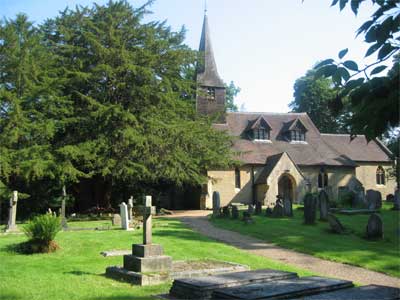Disarray in a Manger
By Ruth D’Alessandro, The Wildlife Gardener It has been a very quiet month in the Wildlife Garden. The fungi have rotted, the reptiles and amphibians have slithered or hopped off into hibernation, the summer vegetables and apples are long over. The hedges look bare and twiggy. The only things with leaves are the lawns. Creatures are keeping themselves to themselves. And the Wildlife Gardener was experiencing blogger’s block. Always on the lookout for natural writing inspiration on my daily garden round, I lethargically swept up some leaves, looked at my leeks, and found a dead lacewing in the sink. Not the stuff of great Wildlife Garden articles. So it was a relief when it was my turn to do a bit of cleaning in our local 10th century parish church, home of the Tandridge yew, and help set up the Christmas crib. Dusting ancient oak beams recycled from even more ancient decommissioned ships is a curiously humbling experience ” how many hands have dusted and are now dust, while the beams are still here?

Beams gleaming, we then had to enter the glory hole (yes, really) at the back of the church to retrieve the crib. As we pulled it out, it emitted a rather strong pong of ammonia. The crib contained a sack of hay from last year that had obviously been used by mice. “I’ll take that straw home for the compost heap”, I thought, as it was already mixed with urine, a great accelerator for the compost. I left the sack outside the door to collect on the way out. While I was taking the sack to the car, it started wriggling alarmingly and things bounced around inside. The sack was full of mice! I wasn’t going to take those home with me! So I found the churchyard compost heap, tipped the straw onto it and watched as bounding rodents made breaks for freedom. But I am unsure what species of mouse they were. They looked more like field mice (Apodemus sp.) than house mice (Mus domesticus), which would be in keeping with the farmland setting of the church.

Research on pest-control websites reveals that both these species infest buildings, and, rather unpleasantly, may carry salmonellosis, a type of food poisoning, the hantavirus, (aka Korean haemorrhagic fever), mites, ticks, tapeworms and fleas. Urgh! I washed my hands very carefully after my Born Free episode. What’s small, brown, hairy and smells of wee? What is just as disagreeable about these small rodents is their ability to withstand, even to live in, the stench of their own urine. It nearly knocked me backwards, so how powerful is it for mice with a far more developed olfactory sense than our own? Urine plays a big role in the lives of mice. There is a fallacy that mice do not have bladders because they wee so much. They do have bladders, and they still wee all the time. Mice continuously urinate to leave scent marks, and their urine trails fluoresce in ultra-violet light. This sometimes works against them as kestrels are able to locate mice on the ground by following the fluorescent trails of urine. I’m sure the mice will regroup and be back in the church by tonight, nibbling the old mothballed cassocks and feeding on pink wafer biscuit crumbs. But I’m quite pleased. While bemoaning my literary block to the Ranger, I sighed that ‘something for an article will probably jump out at me’. And it did.
- Spurn Spawn! - 26th February, 2014
- Bluebells on wheels: axles of evil? - 2nd February, 2011
- Raising the ba: Wildlife and the Ancient Egyptian Book of the Dead - 8th January, 2011
